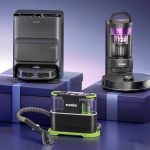
Like shopping for any used car, you’ll want to check an electric vehicle’s crash and repair history, along with the odometer. But the most important thing to know before buying an EV: the state of its battery.
“The main problem is not knowing battery health,” said Recurrent CEO Scott Case. The company provides battery reports, kind of like a Carfax for electric vehicles.
Used car sales hit record highs this year, propelling the average cost of a used car to over $25,000. That’s almost 30 percent higher than the 2020 average.
Looking at zero-emission options, used car platform Vroom found the most popular makes and models based on its buying data. The Nissan Leaf, BMW i3, and Tesla Model S are at the top of the list. Here’s the top 10 with the average selling price:
-
Nissan Leaf ($13,541)
-
BMW i3 ($21,000)
-
Tesla Model S ($48,000)
-
Chevrolet Bolt EV ($22,500)
-
Tesla Model 3 ($42,000)
-
Fiat 500e ($9,200)
-
Volkswagen e-Golf ($15,000)
-
Tesla Model X ($71,000)
-
Chevrolet Spark EV ($10,100)
-
Kia Soul EV ($14,000)
This list also shows how young the used EV market is. The Leaf first came out in 2010 with under 75 miles of range. The BMW i3, the company’s first EV, came out in 2013. Tesla released its first car in 2008.
But it can feel like “you have to have a Ph.D. in statistics” to understand if you’re getting a good deal or buying a car about to plummet in range, Case said.
Here are some tips so you won’t regret buying a used electric vehicle.
1. Do a battery and range check
When buying a gas-powered used car, you probably first check the odometer. But when it comes to EVs, the battery is most important. And a battery’s health isn’t always reflected in the number of miles driven. An EV with high range could have been overcharged or kept in a cold climate. So even a car with a low odometer reading could have dismal range.
Recurrent, the battery analysis tool, helps uncover the mysteries hidden within the power train. The company provides free reports for the following cars as of mid October:
-
Tesla Model 3
-
Tesla Model Y
-
Tesla Model S
-
Tesla Model X
-
BMW i3
-
VW e-Golf
-
Nissan LEAF
Head to the “Shoppers” tab on the Recurrent website. Once you’ve set up a free account, you can plug in the VIN or license plate info of the car you’re looking into buying.
The website will ask you to use your phone to take photos of the dashboard while the car is in eco-mode with all the heaters and AC options off. You’ll send in photos of the battery percent listed, range estimate, and odometer reading from the dash. Then Recurrent puts together and sends you a report.

Credit: RECURRENT
2. Consider where you’ll be driving
Weather and climate can affect your battery performance. If your car is going to be in a super cold or hot place, that’s going to shorten its battery life.
If you need a certain amount of range and you live in Minnesota, you need to make sure the EV’s range won’t drop too low when the mercury drops.

Credit: rECURRENT
3. Think ahead
With Recurrent’s tool, you get a projection of how your battery will fare for the next three years. If it looks like the range will drop too low for your commute, it’s probably not a good fit.
If you’re considering an older EV for the immediate savings, think about what it’ll be like to constantly charge when the range plummets in the coming years.
If you’re inheriting an old battery, you’ll likely need a new one when the car hits the 10-year mark. It’ll cost at least $10,000 for the battery itself, but you’ll need to pay for service and labor. You can set up a battery replacement through the manufacturer (like Tesla or Nissan) or work with a repair shop that does battery swaps. Ideally, to make things easier, the service center would also be able to sell you a new battery.
4. Consider resale value
Look through buying guides.
Recurrent compiles data from almost 6,000 EVs across the country, with information on how much most models usually sell for. Its guides could give you a good sense of how much that Chevy Bolt will be worth after a few years.
5. Shop at specialty dealers
Throughout the country (well, more so in EV-friendly states like California and New York) there are dealerships that specialize in EVs. You’ll get more information about battery stats, charging recommendations, and general EV expertise compared to traditional dealerships.
The most popular states this year (so far) for EV purchases are Texas, California, Illinois, Florida, and New York, according data from automotive marketplace ACV.
Recurrent works with 25 EV dealers, such as Green Eyed Motors in Colorado, that provide a battery report for free. (The dealership pays for a Recurrent subscription, not the shopper.)
Veloz has a search tool to find an EV dealer near you as part of its “Electric for All” campaign.
6. Dig up everything
If you’re buying an EV through a friend or individual sale, try to get as much info about the car’s life as possible. Was it charged daily, putting a strain on the battery? Or was it only charged weekly?
Did it spend winters in upstate New York or summers in Phoenix, where the battery was exposed to extreme temperatures? Was it part of a recall, like the Chevy Bolt?
You’ll want to know it all, so ask questions even if it seems mundane. It’ll help you paint a picture of the car’s battery health.
7. Compare to other EVs
Tesla’s used car site doesn’t provide a lot of details on the car you’re about to buy. You can see how many miles are on the odometer, if it had previous repairs, and what model year it is.
But for this 2016 Model S, which is selling for $76,000, the estimated range is still 315 miles. That’s the range listed when it was new. Five years later, the battery has at least somewhat degraded — but that’s not noted on the listing.
“Transparency reduces that uncertainty,” Case said.
So you’ll want to compare it to similar Teslas in similar conditions to get a sense of how its battery has aged.

Credit: RECURRENT
8. Check the warranty
Most EVs offer a battery warranty that covers at minimum eight years or 100,000 miles. If you find a “younger” EV still under warranty, you could potentially get a replacement battery in your pre-owned ride.
But the battery would have to be degraded enough to qualify for a replacement — in most cases, down to around 70 percent of its original range. Let’s say you start with 300 miles of range, but it drops to 200 miles within the first eight years. In that case, you could get a new battery for free. California is considering a measure to raise that threshold to 80 percent, which could increase the number of people eligible for new batteries.
In a year of regular EV use, you should only lose about 1 to 2 percent of the original charge levels.
9. Wait it out
Each year, more EVs are entering the market. Already there are 70 models available in California, the most EV-friendly state. In 2022, another batch of EVs will be available. While you might not want to throw down more than $60,000 for the new Cadillac Lyriq, within a year or two, those new cars will make it onto used car lots and e-marketplaces.
That’s partly why Recurrent’s Case said he created the free battery reports last year. “The new prices on some of these cars are crazy,” he said. “Now middle- and lower-income [drivers] can actually buy something and take advantage of the fuel cost and environmental benefits.”
Powered by WPeMatico




